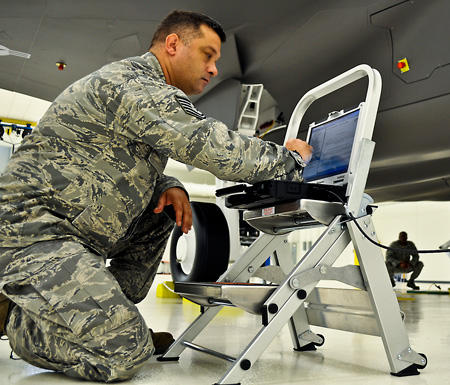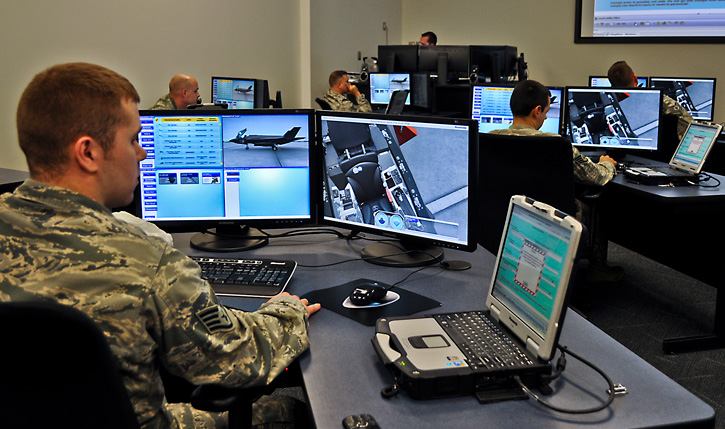
The US Department of Defense has assigned F-35 Regional Maintenance, Repair, Overhaul and Upgrade (MRO&U) capability for airframes and engines for the European and Asia Pacific Regions. Participating nations were provided with requirements for Regional MRO&U, or “heavy maintenance” needs for both F-35 engines and airframes.
As part of the life cycle support plan, each of the F35 participating nations and future operators was afforded the opportunity offer support other F-35 operators in the region, based on its domestic industrial base capabilities. Assignment decisions also considered forward basing of US F35s, aircraft phasing, and transportation.
In the European region, F-35 initial airframe capability will be provided by Italy by 2018. Should additional airframe capability be required, the UK would be assigned to supplement the existing capability. Turkey will initially provide engine heavy maintenance beginning in 2018, with Norway and the Netherlands providing additional capability approximately 2-3 years later. Israel is expected to retain an independent MRO&U capability for both airframes and engines.

In the Pacific region, F-35 airframe capability will be provided by Japan for the Northern Pacific and Australia for the Southern Pacific, with both capabilities required not later than early 2018. For F-35 engine maintenance, the initial capability will be provided by Australia by early 2018, with Japan providing additional capability at least 3-5 years later. Japan’s mainenance facilities are likely to support both Japanese and US jets. In addition, South Korea is expected to join such agreements to support its planned F-35 fleet.
South Korea announced it will not send its F-35 fleet to Japan for heavy airframe maintenance, and will rather send the 40 jets it plans to operate down under to to be maintained in Australia. The maintenance facilities will likely be based at RAAF Base Amberley and RAAF Base Williamtown.
Israel and South Korea could also service those jets in country, but such a deal would require significant investments and specialized equipment for the treatment and testing of the jets’ stealth.
These maintenance assignments do not preclude the option for other F-35 Partners and FMS customers, including those assigned initial airframe and engine capabilities, to participate and be assigned additional future sustainment work, to include component and system repairs, as the fleet grows and the F-35 global presence expands.
The assignments were based on data compiled and analyzed by the F-35 Joint Program Office that was collected from European Partners and their industries. These initial MRO&U assignments will support near-term engine and airframe F-35 overseas operations and maintenance and will be reviewed and updated in approximately five years.

“This is another example of the continuing expansion of global sustainment opportunities for the international F-35 community,” said Lt. Gen. Chris Bogdan, F-35 Program Executive Officer.” The F-35 international users will remain a vital part of the support structure of the Program. Their continuing participation is critical to driving down costs and getting the best-value for the F-35 team, while improving the strength of the global sustainment base for many years to come.”
“This is the first of many opportunities we will have to assign F-35 global sustainment solutions,” said F-35 Program Executive Officer, Lt. Gen. Chris Bogdan. “As international F-35 deliveries increase and global operations expand, support provided by our international F-35 users becomes increasingly more important. We are grateful for the opportunity to work alongside these nations on a daily basis; this close teamwork enables the US Defense Department to make well-informed, best-value decisions to shape the F-35 global sustainment posture for decades to come.”
An important milestone for the F-35 support was the delivery of a new version of the Autonomic Logistics Information System (ALIS). F-35 operators are using ALIS to provide logistics and operational data analysis. As the F-35 fleet management tool, ALIS integrates preventative maintenance, flight scheduling and the mission planning system. Pilots plan and debrief missions, and maintenance professionals sustain the F-35 using ALIS.
During flight test operations, the military will confirm new ALIS capabilities, including high-speed data download for increased aircraft availability. The release also provides each nation flying the F-35 with advanced reporting features for fleet management and trend analysis.
Following validation at test sites, the software will be installed at all F-35 locations and deployed for military operations beginning in 2015.
“The men and women who will take the F-35 into operations are charting a new course for fighter aircraft, from tactics development to fleet sustainment,” said Mary Ann Horter, vice-president of F-35 Sustainment Support at Lockheed Martin Mission Systems and Training. “ALIS provides them with a complete picture of the fleet’s status, so that they are equipped with the information needed to make proactive decisions and keep the jets flying.”
The F-35 is the first tactical aviation system to have sustainment tools engineered in concert with the aircraft for efficiency and cost effectiveness. ALIS is currently operating at nine locations, supporting more than 12,000 sorties to date. Compared to previous aircraft, a higher fidelity of information about the F-35 fleet is tracked within ALIS to reduce operations and maintenance costs and increase aircraft availability.





















